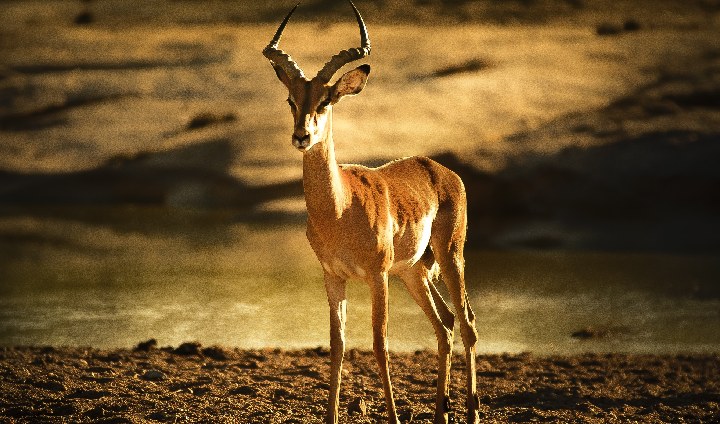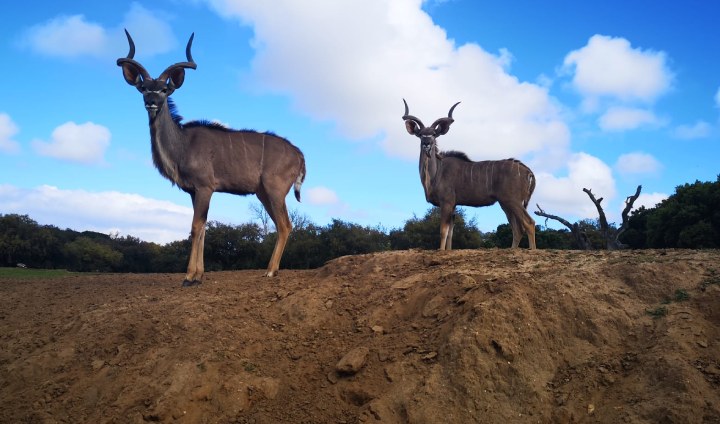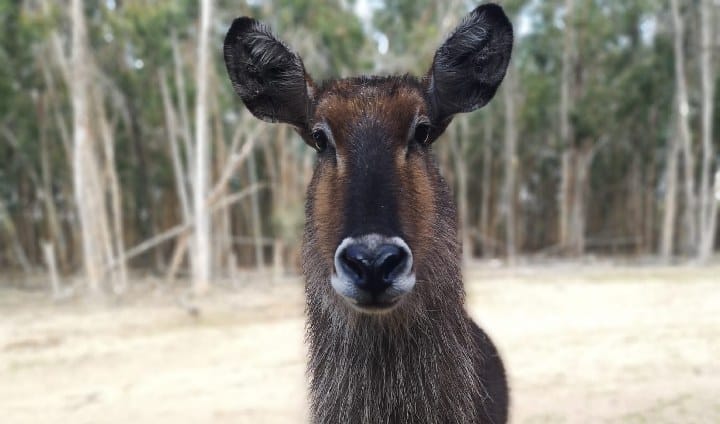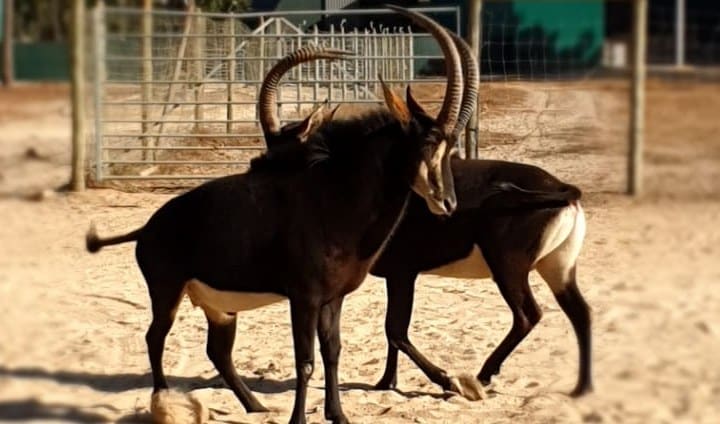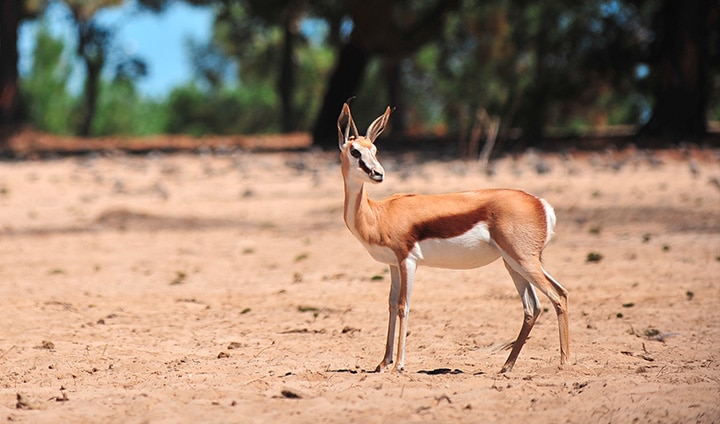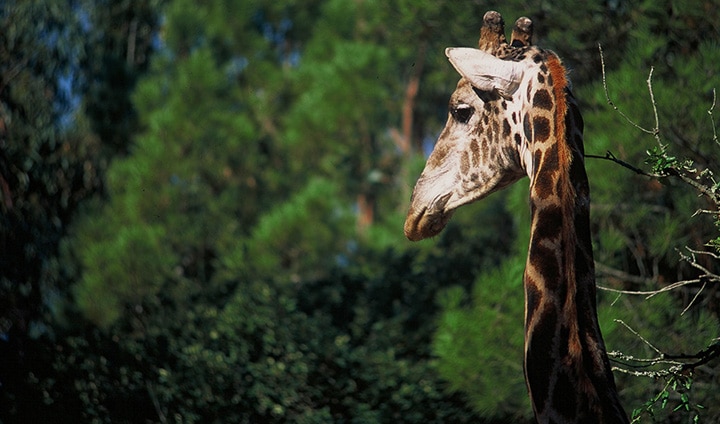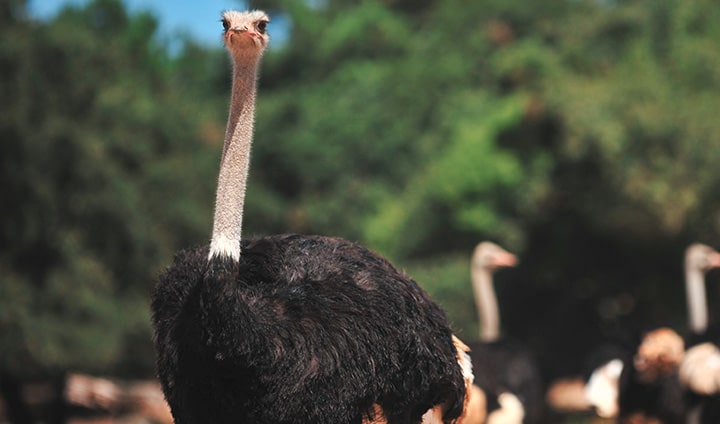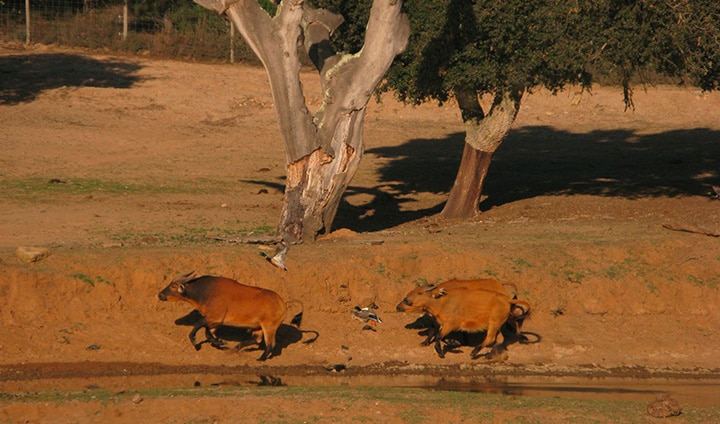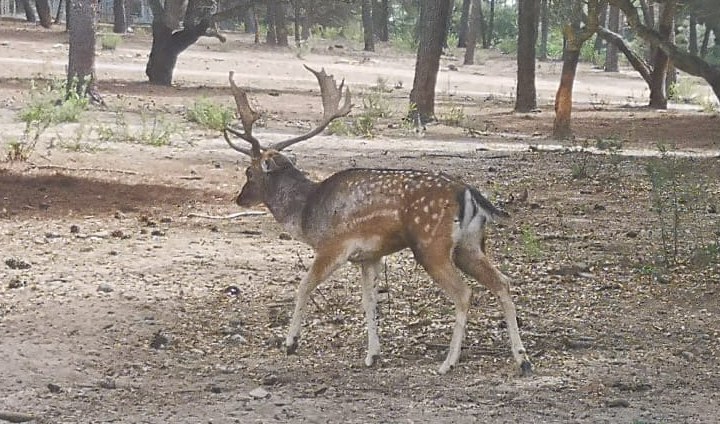Distribution and Habitat: They are found in Angola, southern Zaire, Rwanda, Uganda and Kenya. They usually prefer areas of woods, with possibility of pasture and with water points.
Diet: Impalas are ruminant animals and are considered intermediate feeders. They adapt with extreme ease to both grazing herbs and feeding on shrubs.
Reproduction: Females become sexually mature at about one and a half years of age. The reproductive season occurs between March and May, with a gestation time between 194 and 200 days. In the first days of life, impala females and their offspring move away from the group, in order to go unnoticed in the eyes of predators.
Behaviour: They are a species with activity at dusk and at dawn. The average number of females in a herd is between 15 and 100. Impala males alter their territory to be synchronized with the reproductive season. To escape predators, impalas use a very effective technique, performing large jumps to confuse predators. These jumps can reach up to 3 meters in height.
Conservation Status: Endangered (EN)
Class: Mammalia
Order: Artiodactyla
Family: Bovidae
Dimensions: 1.3m – 1.5m long
Weight: 45 kg – 60 kg
Lifespan: 18 years in Captivity and 13 years in the wild


